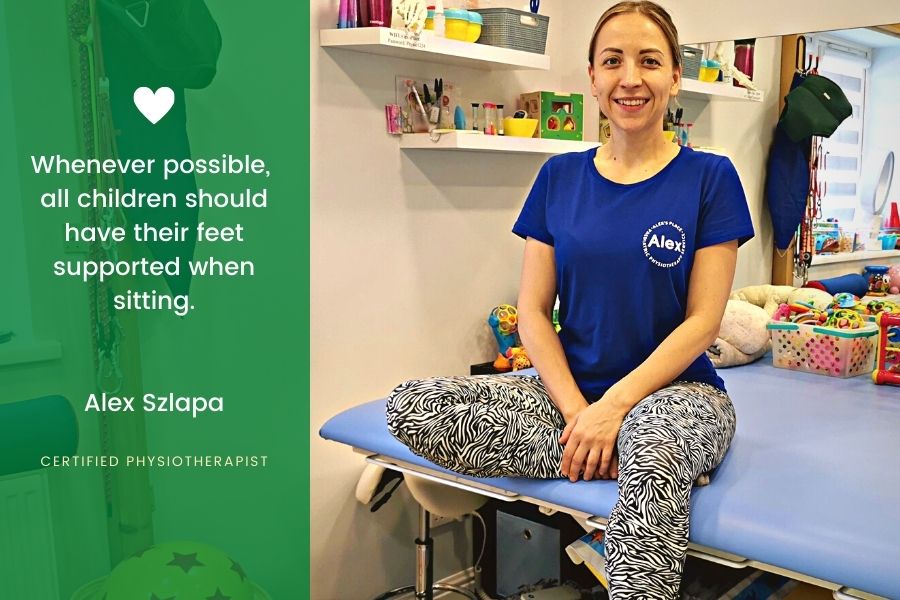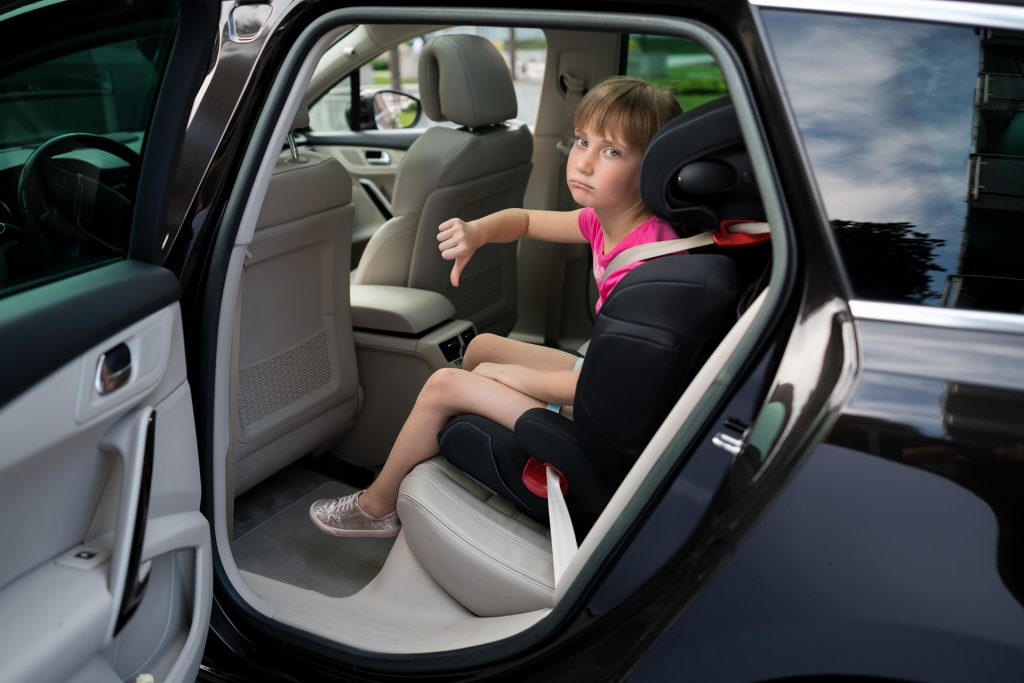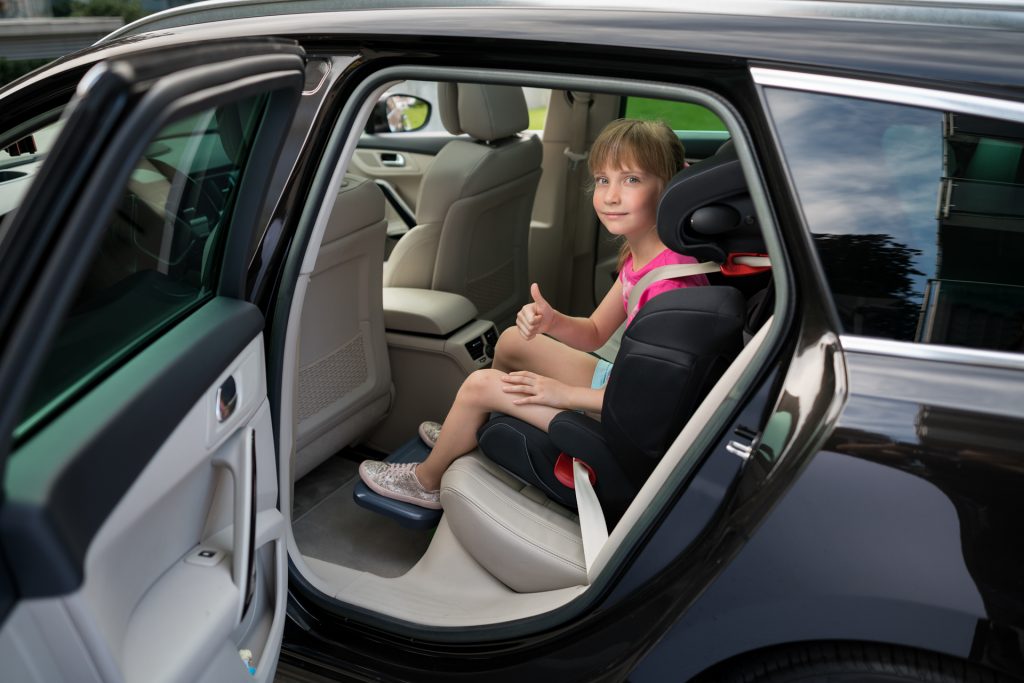
Little traveller’s equipment – what should I prepare for my child before a trip?
Are you going on a trip, big or small? Are you planning a spring trip? When preparing for a trip,

As a responsible parent who wants to ensure safe conditions for travelling by car, you often do an Internet research before choosing the best car seat for your child. You compare safety parameters, scope of protection, results of comparative tests and recommendations of other parents. Most often in articles or advertisements you see children smiling and excited about the upcoming journey. The question is, do you see one small detail that turns out to be a huge problem in your car? If you have ever wondered whether dangling legs are disadvantageous and uncomfortable for your baby, then your intuition was telling you the right thing.
When travelling, almost every child becomes cranky after a while and as a result, tries to change positions all the time. What is the reason behind them constantly kicking the front seat and fidgeting in their seat? The answer to this question should be sought in the basics of anatomy, that is, the structure of the human body. We asked an experienced, certified physiotherapist for children and adolescents, MSc PT Aleksandra Szlapa, MSCP, for her opinion and advice. We’d like to invite you to an interesting interview. You will be surprised by how important leg support is for the proper development of the baby.
KneeGuardKids: Aleksandra (Alex), our interview today is not accidental. You are an expert who works with children as a physical therapist. In your well-equipped and modern practice, you conduct assessments and therapy for children of all ages. First, let’s explain what is the correct sitting position?
Aleksandra Szlapa: The correct, active sitting position is the position in which the head and back are kept in one vertical axis, maintaining the physiological curves of the spine. The pelvis is positioned in a neutral position and the support points are located on the sit bones (ischial tuberosity). The lower limbs are bent – the most optimal angle of bending in the lower limb joints is ~ 90° (hip, knee and ankle joints). The feet, on the other hand, rest flat on the ground, providing stable support for the other body segments. The position itself, on the other hand, is maintained freely, without any extra effort, and without the need for conscious body control.
KneeGuardKids: Does the lack of leg support affect all children, or only those who suffer from various diseases?
Aleksandra Szlapa: Whenever possible, all children should have their feet supported when sitting. This applies to both eating meals, as well as “table” activities/games or travelling.

KneeGuardKids: The problem of children in need to special care due to the accompanying diseases is extremely interesting and we will be grateful for developing this topic. We will devote a separate article to it. Meanwhile, let’s focus on children who, at first glance, are not sick, but the problem of dangling legs in the car also affects them. Why?
Aleksandra Szlapa: Unfortunately, long-term driving with the inability to support the feet, when the child’s legs limply dangle from the car seat, will result in prolonged pressure on soft tissues, vessels and nerves in the popliteal fossa. A child feeling discomfort with such compression will most likely start looking for a different, more comfortable position. Therefore, he will start “fidgeting” in the seat, move his legs, look for support for the feet. He will begin to manifest impatience resulting from the necessity to sit in an uncomfortable position.
KneeGuardKids: Please explain, from the aspect of the human body, why do the legs feel numb when they dangle?
Aleksandra Szlapa: While sitting, when the back is pushed against the backrest of a chair or armchair, the back knee contact the edge of the seat, which causes a slight compression of the structure located there – vessels, nerves, soft tissues. If the feet are not supported during sitting, due to the force of gravity, the compression exerted in the area of the back knee increases significantly. The circulation of both blood and lymph in the lower extremities deteriorates, resulting in numbness in the legs.
KneeGuardKids: Does the lack of support have other negative effects in addition to impaired blood circulation to the limbs?
Aleksandra Szlapa: As for the consequences of improper sitting for the knee joint itself, mechanical irritation of the joint, which occurs, e.g., while sitting with a bent leg or even on the leg, may cause the synovial fluid from inside the joint to appear in the bursa and form a cyst (Baker’s cyst). This is not a common problem, but if it occurs, the most important thing is to promptly diagnose and treat it properly in order to lead to long-term dysfunction of the knee joint.
However, when it comes to the consequences of not supporting the feet while sitting down for the entire body, it should be remembered that this may generate incorrect posture patterns (the child slumps, leans more to one side or sits more on one buttock, etc.), which in turn will lead to abnormal load distribution, tissue and joint overload, and pain.
KneeGuardKids: Many parents are increasingly looking for products that offer foot support. We can see that there are high chairs and strollers with a footrest on the market. Do you agree with the opinion that the awareness of parents in this area has been growing recently?
Aleksandra Szlapa: Yes, parents’ awareness of this topic definitely growing. The element of parent education is promoting correct posture and locomotion patterns. It is an integral part of therapy at Alex’s Place. We place great emphasis not only on effective therapy during the visit, but also on what happens out of the treatment room because it can both strengthen and interfere with the positive effects of the therapy.
KneeGuardKids: Now let’s focus on travelling by car. Children very often fidget in the car seat, kick the driver’s backrest, and press their feet against various elements of the interior of the vehicle. For you, are these also signs of discomfort and a desire to change the unfavourable position?
Aleksandra Szlapa: If we know that our child feels good on a given day and that there is nothing wrong with him, but during a car journey he manifests such behaviour, then I would definitely think about the journey comfort or the lack of it. A natural reaction, both in children and adults, is to look for the most comfortable position, regardless of whether we lie, sit or stand, and where we are. Thus, such fidgeting, kicking, or sticking the legs against various elements of the car interior may be a sign of discomfort and the desire to change an uncomfortable position.
KneeGuardKids: After how long do the legs usually start to go numb? If, for example, a parent sits on a high bar chair, will he experience the disturbance of blood and lymph circulation in the same way if he does not rest his feet on a footrest?
Aleksandra Szlapa: We usually start feeling numbness after a few to a dozen or so minutes. Yes, it is comparable, although if you sit on a bar chair, the compression of the structures will be higher – in the upper, back part of the thigh. However, the symptoms of reduced circulation in the form of numbness or tingling will look similar. The pelvis will also shift in a similar way – without the support of the feet, it will slide down from the seat and the position will soon stop being comfortable.
KneeGuardKids: We observe that with the legs supported, children sit much longer, maintaining the so-called correct posture. This is extremely important for security reasons. Why is foot support important? Does it affect the position of the spine in a sitting position?
Aleksandra Szlapa: When sitting with supported feet, the ground reactions can be used to position the higher body segments properly. That is, thanks to the support of the feet, we can obtain the correct, axial positioning of the pelvis, spine, and head.
KneeGuardKids: We will now ask about something that is especially important to all parents. Many children, trying to relax their numb legs, push them against the front seat. What are the possible injuries in the event of an accident if the child’s legs are straight at the moment of the collision?
Aleksandra Szlapa: It is definitely not a safe driving position. In a car accident, the people inside the vehicle are subjected to forces that injure them after exceeding the strength of the body’s tissues. Each accident has a different course, and therefore the direction and value of the energy affecting the accident participant will also be different.
KneeGuardKids: Yes, we know that an unfavourable coincidence can damage even the hips and pelvis. How serious is this?
Aleksandra Szlapa: If, as a result of a car accident, injuries to the hip joints or pelvis occur, they are usually quite serious. This is due to the fact that immense forces are needed to create them. The tissues of the body absorb enormous amounts of energy and, after exceeding the limit of their strength, burst, rapture, crack, break, etc. Fractures in the pelvic area are very often complicated by damage to the internal organs of this area. In addition, injuries to the hip joints, pelvis, or spine very often require surgery, which also carries some risks.
KneeGuardKids: How long can it take to recover from such injuries?
Aleksandra Szlapa:A long time. From several months to even several years. Sometimes the pain caused by injuries in a car accident lasts a lifetime.
KneeGuardKids: Do you think supporting the feet on a car footrest can help children to travel comfortably and properly?
Aleksandra Szlapa: Yes. Support for the feet allows achieving a comfortable and therefore safe position while driving. Correct position in the seat provides optimal protection in the event of a road accident.
KneeGuardKids: Do you recommend driving with your feet on a footrest on a daily basis or only on long journeys lasting several hours?
Aleksandra Szlapa: I recommend using a footrest on both everyday, shorter routes, as well as on long, several hours-long journeys. Please also remember that on longer journeys, it is recommended to stop and “stretch” the whole body, move a little bit and take a few deep breaths, maximum every 2 hours.

KneeGuardKids: Thank you very much for your recommendation. Please tell us, in what situations Alex’s Place team can help? Do you provide post-accident rehabilitation of the lower limbs?
Aleksandra Szlapa: At Alex’s Place, aside from the therapy of patients with developmental or postural problems we also work with children after accidents. Most often, we see children with fractures in the upper or lower limbs, after the plaster cast is removed. At this stage, we work on “activating” the limb, restoring the full range of motion – within both the joints and soft tissues, and strengthening. We also work on scarring and sensation in the injured area.
KneeGuardKids: Thank you for taking the time to answer important and bothering questions about the impact of not having adequate support for your child’s legs while driving. Now, readers of our blog will also know that dangling legs in a car seat are not only uncomfortable, but can also have a negative impact on the shaping of a young person’s posture. We are very pleased that you noticed out action STOP to dangling legs and joined it like this.

Are you going on a trip, big or small? Are you planning a spring trip? When preparing for a trip,

Moving around in your car is the fastest and most convenient method of transport. Whether taking a long holiday trip

Looking after the safety and comfort of a child can be a real challenge – and it becomes even more